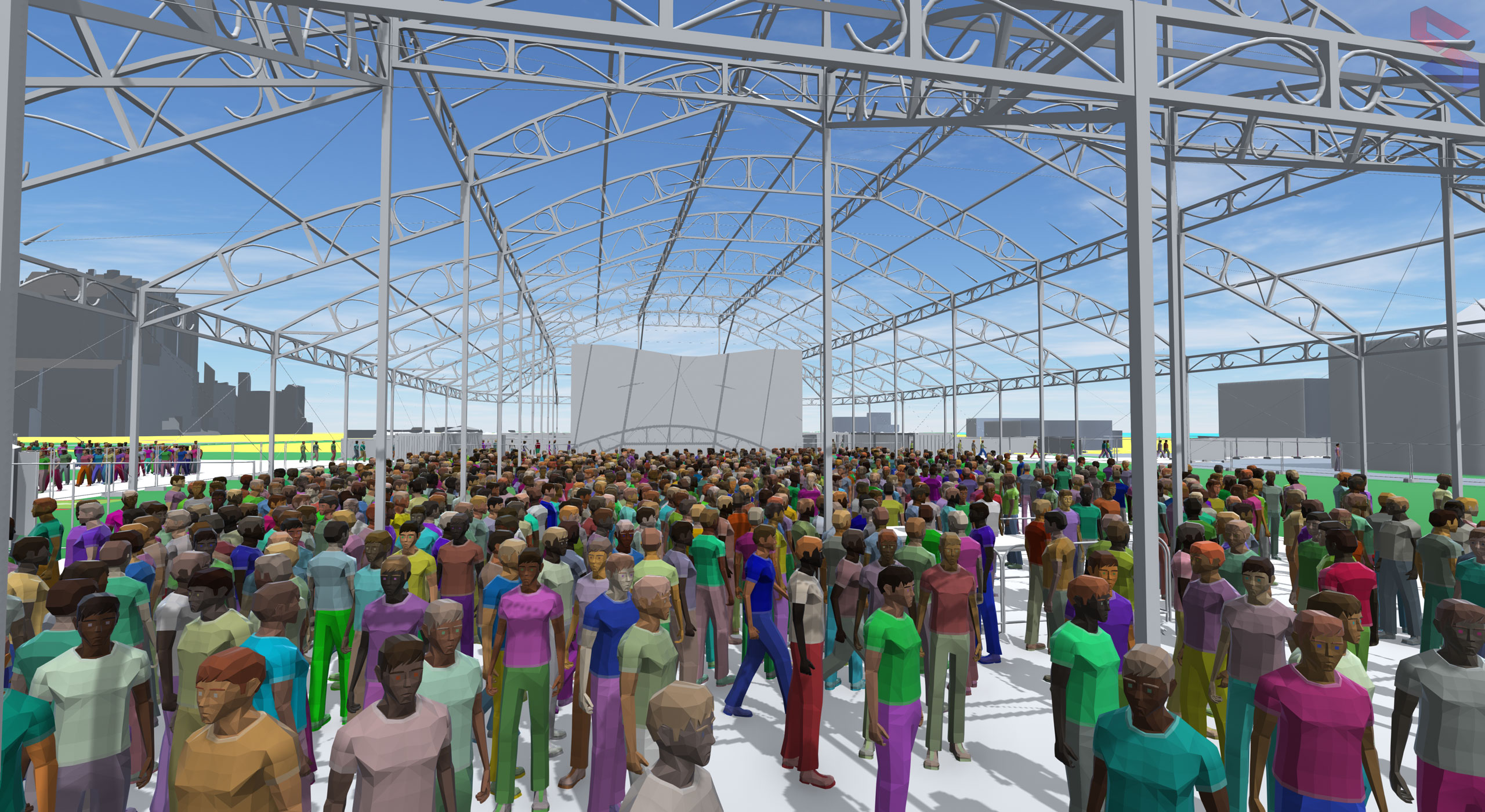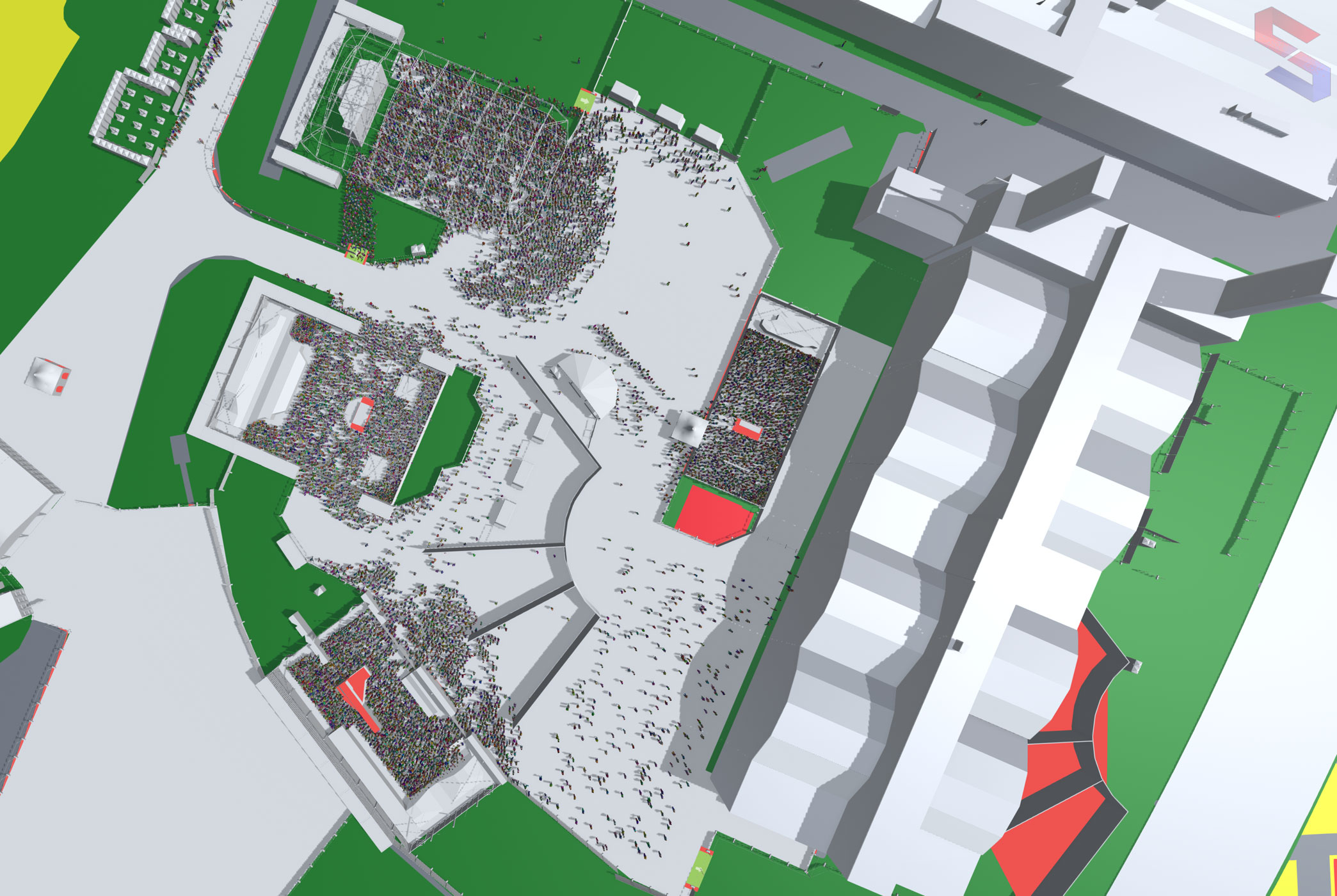
uCrowds at HerfstDrift Dance Festival
uCrowds is proud to be a part of the Fieldlab initiative from the municipality of Nijmegen. On a global level, we’re marrying the GIS, CAD and gaming worlds. Together, we are examining and testing various facets of digital twins of areas in the city of Nijmegen, and, by extension, crowd simulations. This collaboration is helping us to understand the practical benefits of crowd simulation and how it can be used to improve the efficiency of planning and managing events. During the past few weeks, we have been working together to create a digital twin and crowd simulation of the dance festival Hersftdrift in Nijmegen.
Crowd simulations can be an effective tool for examining how people move around in dense festivals. By understanding and visualising the movement of digital crowds, organizations can improve upon current methods for managing real-world crowds. Together with the municipality of Gemeente Nijmegen, AniVizzion, and Studio Linksvoor, we created a digital twin and simulation of the festival grounds.

The first step in this process was to draw the environment in Anivizzion’s SCAD application. Studio Linksvoor created a detailed map of the festival grounds. The municipality of Nijmegen has used this drawing in their GIS application to review the festival online and see whether everything was set up correctly when previewing the event. In addition, we implemented the exported map as the base environment in our crowd simulation software SimCrowds. Within the simulation, our aim was to answer two main questions: whether 13000 attendees can fit in the 8 dance locations, and whether everyone can evacuate within 12 minutes. The video shows a summary of the two main questions. Presenting the overall picture of the simulation and focuses on some of the key locations. In the future the model could be further improved to even better reflect the real life set-up by opening up parts of the locations that are now partly closed in our model (for example adding a second floor in Elektra).
By understanding the potential uses for crowd simulations, the SimCrowds’ simulation and visualisation was able to give insights to the events’ stakeholders and to communicate more effectively. Those who attend events can enjoy them more fully, knowing that the risk of injury due to overcrowding has been significantly reduced.
We see many use cases for these kinds of events in the future: from a visualization tool to communicate to emergency services, to simplifying the steps to getting a permit for your event. The use of crowd simulations is relatively new, but it is growing in popularity. As more and more organizations recognize the benefits of using simulations to study crowd behavior, the demand for these services is likely to increase. uCrowds is at the forefront of this trend and is poised to provide valuable insights into how to manage crowds at events.
Read, like and share this post on our LinkedIn!